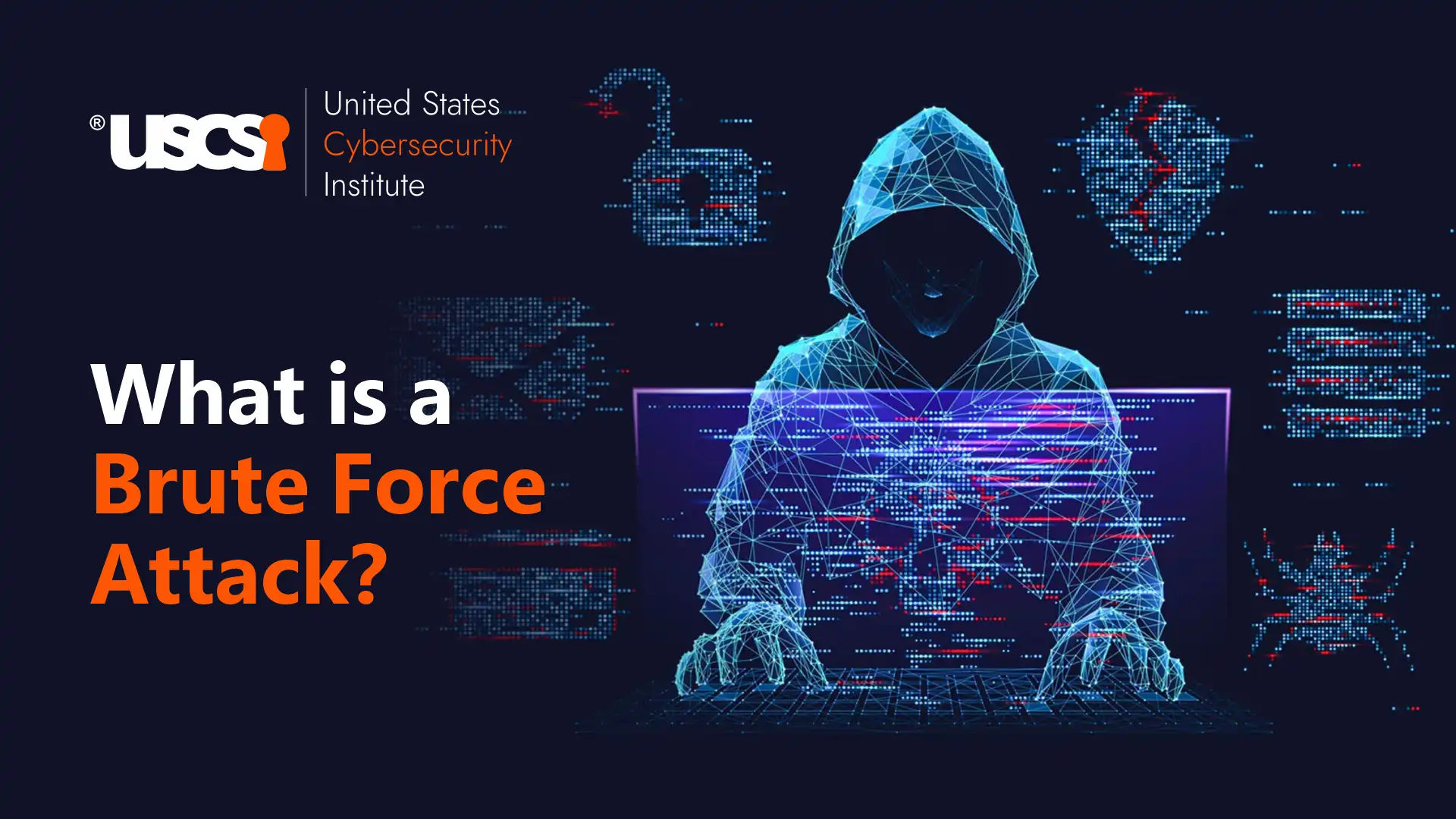

Brute Force Attack – What it is and how to remain safe?
Brute force attack is one of the common and most prevalent forms of cyberattacks, where the cybercriminals try to gain unauthorized access to accounts or sensitive data by continuously trying to breach login credentials such as usernames and passwords through password guessing and trial and error methods.
These attacks often target authentication points such as website login forms, SSH servers, or password-protected files.
While the other cyberattacks mostly exploit software vulnerabilities, brute force attacks use raw computing power and automation to guess passwords. The basic versions use scripts or bots to try thousands and even millions of combinations per minute. It is like a thief trying all the keys he has to open the locks.
Weak passwords make brute force attacks much easier, whereas complex and strong passwords are hard to crack. This is why you often get recommendations to use passwords with alpha-numeric and symbol combinations.
However, attackers are smart, and they are constantly developing more sophisticated ways to speed up the password cracking process.
If you try to understand the scale of cybersecurity threats, we are exposed to today, consider this: Microsoft blocks an average of 4,000 identity attacks per second. Meanwhile, advanced password-cracking rigs are capable of executing up to 7.25 trillion password attempts per second.
As we look forward to the future, quantum computing is rising, and it will introduce new sets of challenges. The traditional cryptographic systems such as RSA mostly rely on the difficulty of factoring large numbers – a process that would take billions of years with today’s technology. But with a powerful quantum computer with an estimated at around 20 million qubits, breaching a 2028-bit RSA encryption key could take just a few hours.
With the growth of quantum capabilities, the urgency for adopting post-quantum cryptographic methods is also rising that will help us secure our accounts and data against future brute force attacks.
What Makes Brute Force Attacks Dangerous?
Brute force attacks are quite dangerous as they pose a huge risk of exploiting the weakest elements in the security system i.e., human created passwords and unsecured accounts.
If the brute force attack becomes successful, it will grant attackers immediate unauthorized access to our accounts. This will not only help them impersonate users and steal sensitive information, but they can also literally move through a network uninterrupted.
The more advanced cyber intrusions require excellent and sophisticated cybersecurity skills. Where to carry out brute force attacks, the criminals only need to be persistent and have sufficient computing resources, thus making the brute force attack accessible to everyone, even low-skilled attackers.
One of the most concerning aspects of brute force attacks is their domino effect. For example, if an attacker manages to compromise an administrator’s credentials, then they could easily gain access to the entire network of user accounts.
Even regular user accounts can contain personally identifiable information (PII) or can be used to infiltrate deeper into a system.
You may find it surprising, but most of the data breaches and ransomware incidents start with a brute force attack on remote entry points such as Remote Desktop Protocol (RDP) or VPN services. Once inside, the attackers can install malware, deploy ransomware, seize control of systems entirely, or use them as they want.
Brute force attacks are also highly disruptive from a network standpoint. The high volume of login attempts they generate often overloads the authentication systems and creates ‘noise’ that distracts defenders, or they can conceal more covert attacks happening in parallelly.
In a recent case, researchers detected a massive global brute force campaign that used nearly 3 million unique IP addresses to target VPNs and firewalls, showing how distributed and large-scale these attacks can be.
How Does a Brute Force Attack Work?
Brute force attacks work on a simple principle of guessing passwords or encryption keys until the correct one is found.
Attackers start by simple and common passwords such as “123456”, “password”, “qwerty123”, etc. and then move to try other possible combinations of characters. They use powerful CPUs, GPUs, and cloud computing to test millions or billions of guesses per second.
Say for example, a six-character password using only lowercase letters has about 308 million possible combinations which the modern hardware can crack almost instantly. The longer and more complex the passwords are, the more significant time and resources they require to break because of their exponential increase in possible combinations.
Brute force attacks aren’t limited to passwords, as they can also be used to crack encrypted files and keys depending on the algorithm and key length. Mostly, the attacks become successful as they exploit weak passwords, because of lack of account lockout policies, or reuse of passwords in multiple accounts, instead of breaking strong encryption directly.
Online vs. Offline Brute Force Attacks
Brute force attacks can be done in two ways – Online and Offline
-
Online Attacks
It involves guessing passwords in real time against live systems such as login pages or SSH services. These are often affected by network speed and security measures like rate limiting, IP blocking, and CAPTCHAs. To bypass these, attackers have to use botnets or multiple IP addresses.
-
Offline Attacks
It happens when attackers already possess the stolen password hashes, maybe from data breaches. They can then use powerful hardware and cybersecurity tools like Hashcat or John the Ripper to test billions of password combinations locally. One great advantage of offline attacks is that they do not trigger any system defenses.
Types of Brute Force Attacks
There are various types of brute force attacks that come in several forms and use different strategies to guess credentials.
Here are different types of brute force attacks:
- Simple Brute Force Attacks
It tries every possible character combination until the correct password is found. Though it is effective, it is often slow against strong passwords.
- Dictionary Attacks
This method uses a predefined list of common words or passwords to guess credentials more efficiently than random guessing.
- Hybrid Brute Force Attacks
It requires a combination of dictionary words with brute force modifications such as adding numbers or symbols to guess the more complex passwords.
- Credential Stuffing Attacks
This form of attack uses stolen username-password pairs from previous data breaches and tries to log in to other services where there are chances of users using the same credentials.
- Rainbow Table Attacks
In this method, attackers crack hashed passwords by matching them against huge, precomputed tables of common password hashes.
- Password Spraying
This means attempting a few common passwords in different accounts to avoid triggering account lockouts or detection systems.
How to Prevent Yourself from Brute Force Attacks
To prevent user accounts from brute force attacks, organizations need to adopt a multi-layer security approach and include:
- Enforce Strong Password Policies
Users must use long passwords, typically 12-15+ characters, and combination of mix of letters, numbers, and symbols. Use of passphrases should be encouraged along with the use of password managers to create and store secure credentials.
- Enable Multi-factor Authentication (MFA)
Multi Factor Authentication adds an extra layer of security by using SMS codes or authentication apps. It ensures passwords alone aren’t enough to gain access.
- Apply Account Lockouts and CAPTCHA
This means locking accounts after several failed logins attempts and use of CAPTCHA to block bots and slow down automated attacks.
- Monitor and Block Suspicious Activity
Organizations should employ real-time monitoring and anomaly detection systems to identify and flag excessive login attempts or access from unusual IPs.
- Secure Password Storage and Access Protocols
Store passwords using strong, salted hashing algorithms such as bcrypt or Argon2. Implement secure authentication protocols and restrict access to sensitive services via VPN or MFA.
Each of the steps mentioned above can significantly reduce risk and frustrate brute force attempts to protect both users and systems.
Summing up!
The methods and techniques attackers use to gain unauthorized access to accounts and data are increasing and brute force is one of the most common forms of such techniques. It even doesn’t require huge technical skills but excellent computation resources to carry out attacks at large scale.
Therefore, organizations need to have strong security measures in place and employ multiple layers of security to protect their resources and accounts from these evolving and sophisticated attacks.





